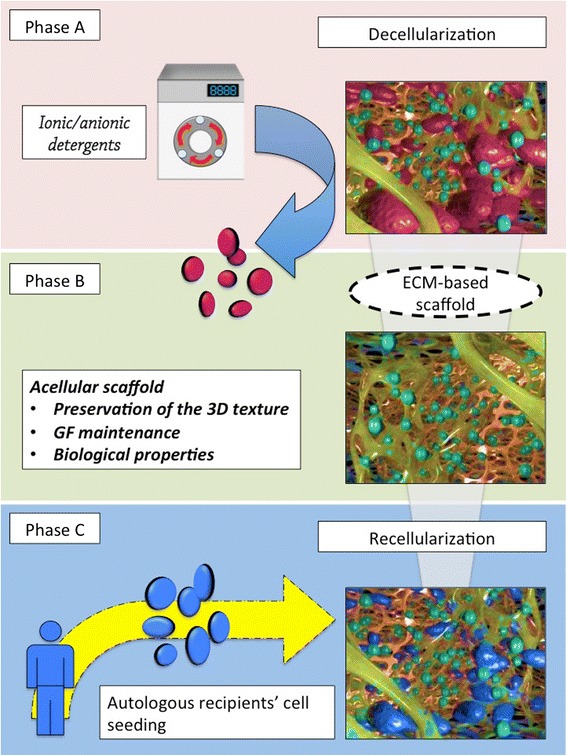Fig. 1.

Key concepts of the tissue engineering and regenerative medicine paradigm. During the first step of the process (phase A), all the native cells are detached from the extracellular matrix (ECM) framework by using ionic and anionic detergents with different timings and concentrations. This procedure, called decellularization, produces an acellular ECM-based three-dimensional scaffold while keeping the native organ-specific structure almost intact. Phase B represents the second step, in which the scaffold is completely analyzed in order to check the effective preservation of the original texture, to quantify the growth factors present, and to study the scaffold’s biological properties. The last step is the seeding of the scaffold with organ-specific cells (phase C). In the best-case scenario, these cells come directly from the patient who will receive the bioengineered organ (autologous cells), avoiding immunological problems. This step, called recellularization, is a major obstacle to overcome due to the large number of cells needed to occupy the entire volume of the acellular scaffold. In addition to the number of cells, there is a need to maintain specific cell type proportions in order to establish a physiologically functional organ. Second, the exact cellular ‘cocktail’ for each organ needs to be established to get the perfect seeding in which all the cells are able to grow up autonomously once seeded. 3D, three-dimensional; GF, growth factor
